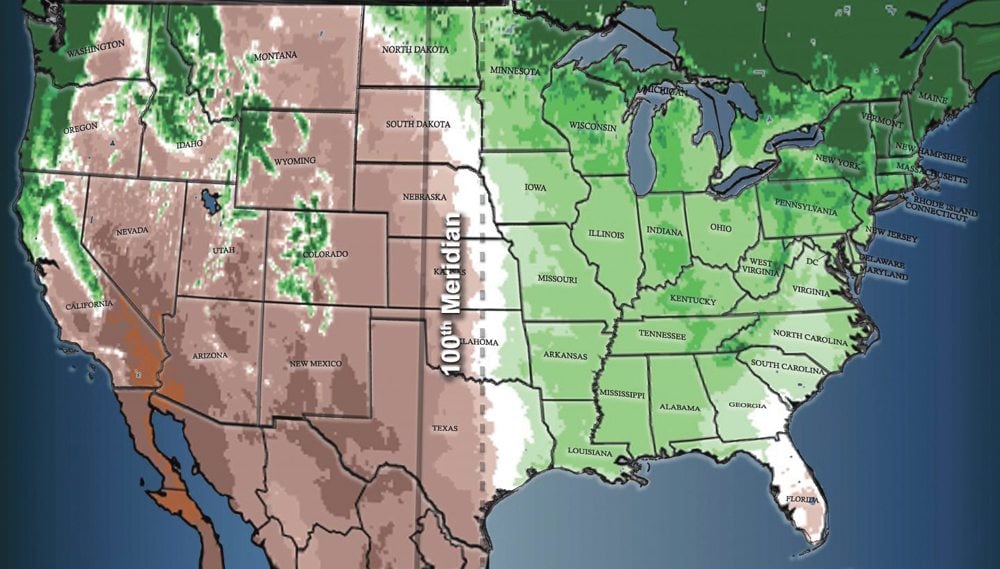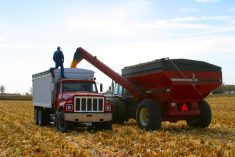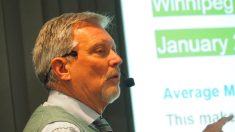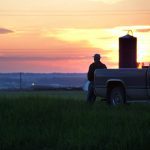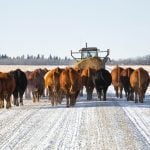It’s always been a point of pride in Manitoba that the Prairies begin here, at the 100th meridian.
That north-south line cleaves North America in two from Mexico to Manitoba, as first noted in 1978 by explorer John Wesley Powell, who called it the boundary between the humid East and the arid West.
Now scientists are looking how this partition has played out so far, and what the future may hold. They confirm that the divide has turned out to be very real, as reflected by population and agriculture on opposite sides.
Read Also

Finally getting paid for sustainable farming?
Alberta project says they might have a line on a workable ecosystem credit model to reward farmers for sustainability, and Manitoba might be next
They say also that the line appears to be slowly moving eastward, due to climate change and will almost certainly continue shifting in coming decades, expanding the arid climate of the western plains.
“This concept of a boundary line has stayed with us down to the current day,” said Richard Seager, a climate scientist at Columbia University’s Lamont-Doherty Earth Observatory. “We wanted to ask whether there really is such a divide, and whether it’s influenced human settlement.”
Powell noted correctly that the western plains are dry in part because they lie in the rain shadow of the Rocky Mountains. Seager’s team identifies two other factors. In winter, Atlantic storms bring plenty of moisture into the eastern plains, but don’t make it far enough to moisten the western plains. In summer, moisture from the Gulf of Mexico moves northward, but that also curves eastward, again cheating the west.
Now, the researchers say, warming climate appears to be pushing the divide east. In the northern plains, rainfall has not changed much, but higher temperatures are increasing evaporation.

